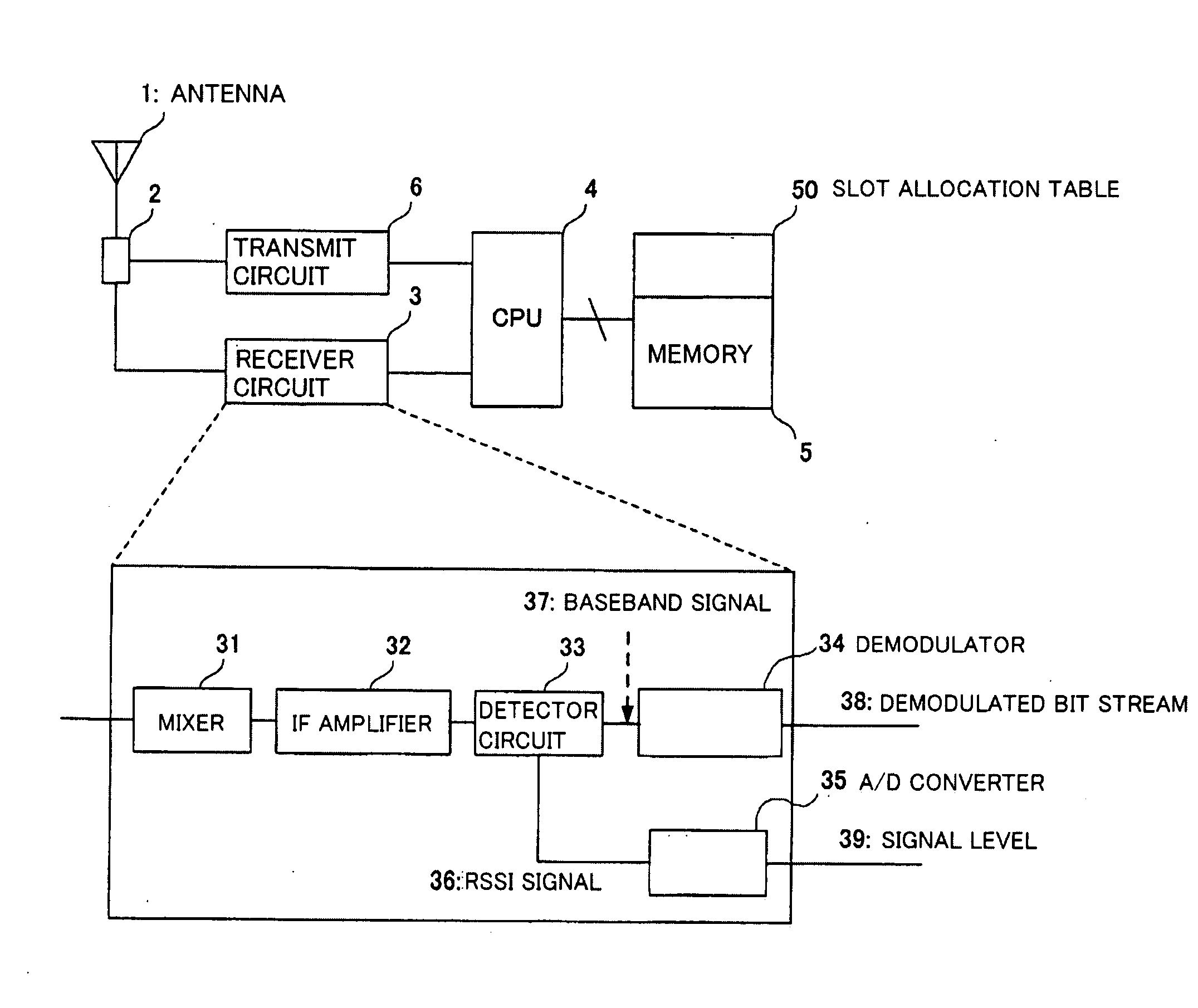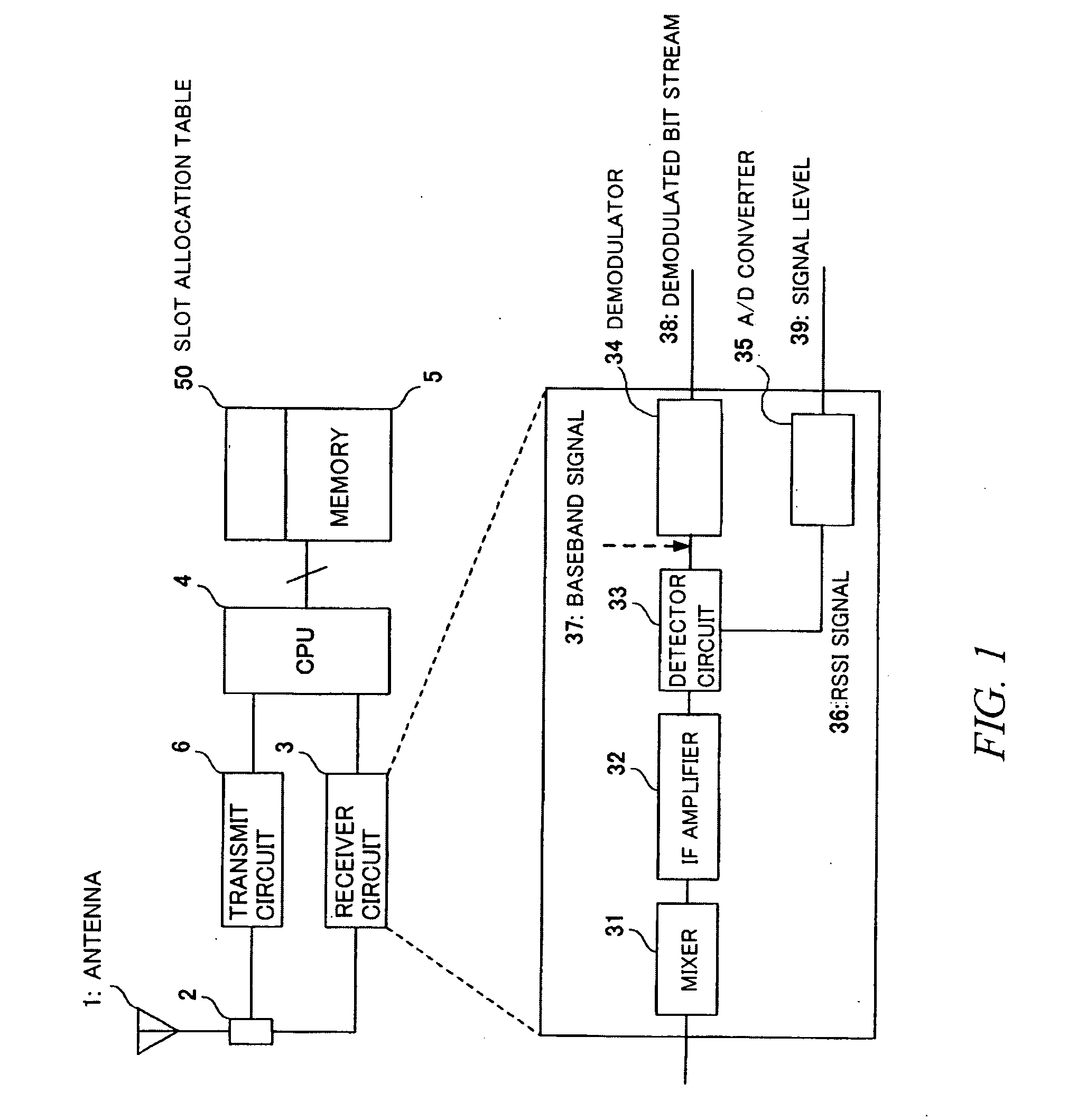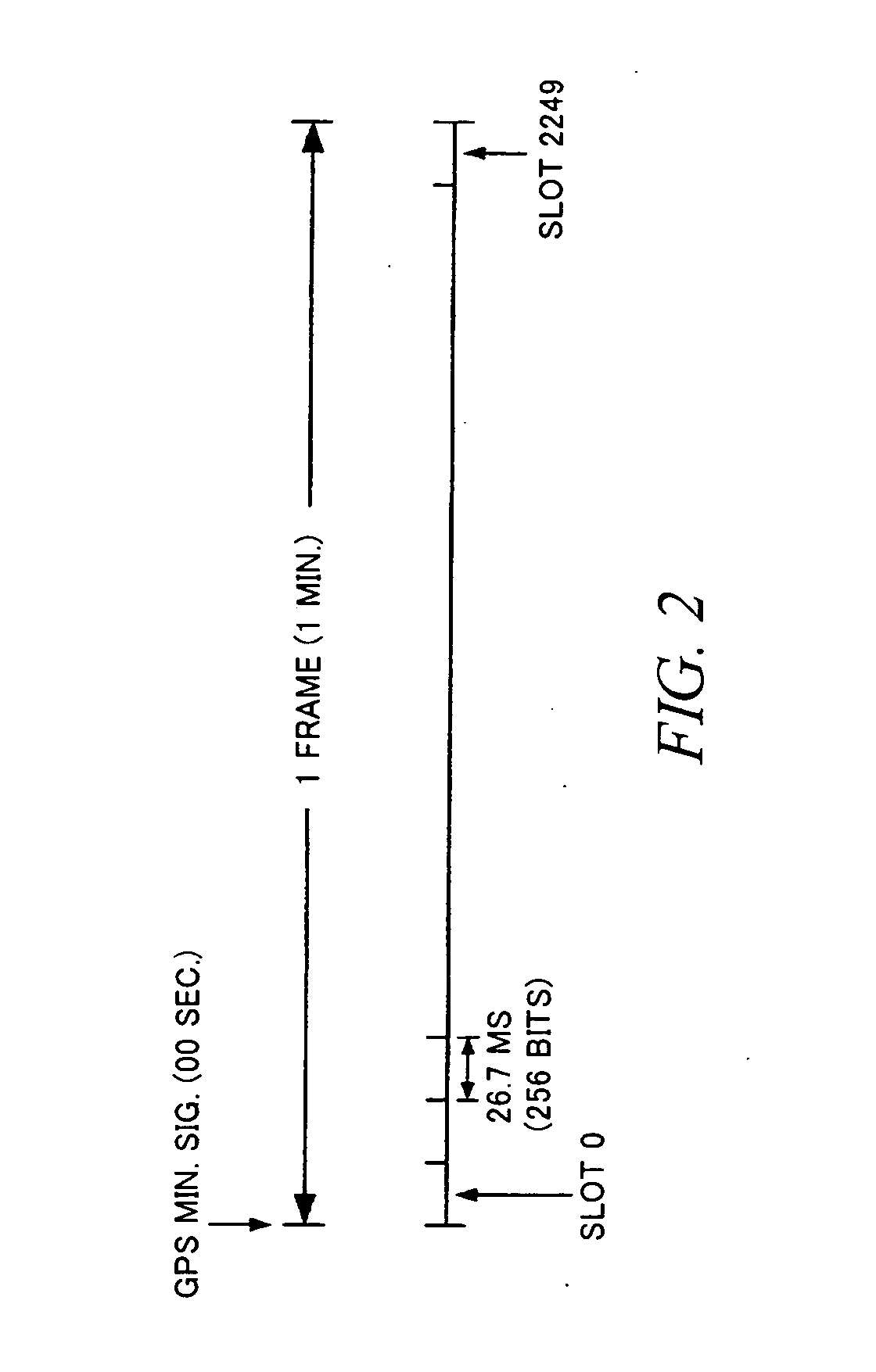TDMA communications apparatus
a communication apparatus and time division technology, applied in the field of time division multiple access (tdma) communications apparatuses, can solve the problems of conflict of transmission, inability to ensure efficient and safe navigation of ships, and acts against the spirit underlying uais rules and specifications,
- Summary
- Abstract
- Description
- Claims
- Application Information
AI Technical Summary
Benefits of technology
Problems solved by technology
Method used
Image
Examples
Embodiment Construction
[0039] FIG. 1 is a general block diagram of a TDMA communications apparatus according to a preferred embodiment of the invention, and FIG. 2 is a diagram showing a frame structure defined as part of the UAIS specifications applied to the TDMA communications apparatus of the invention.
[0040] TDMA communication is a method of communication between a mobile station (e.g., a ship station) and a fixed station (e.g., a base station) or between mobile stations, in which one frame is divided into multiple slots and communication is performed using the slot as a unit of data transmission. According to the UAIS specifications, 2,250 slots are allocated in one frame which is 1-minute long as shown in FIG. 2. The duration of each slot is 26.7 ms and each slot contains 256 bits of information. Frame synchronization is achieved by use of a GPS 00-second signal output from a GPS receiver at the beginning of a frame, and slot 0, slot 1, slot 2, . . . , slot 2249 are allocated in this order in each ...
PUM
 Login to View More
Login to View More Abstract
Description
Claims
Application Information
 Login to View More
Login to View More - R&D
- Intellectual Property
- Life Sciences
- Materials
- Tech Scout
- Unparalleled Data Quality
- Higher Quality Content
- 60% Fewer Hallucinations
Browse by: Latest US Patents, China's latest patents, Technical Efficacy Thesaurus, Application Domain, Technology Topic, Popular Technical Reports.
© 2025 PatSnap. All rights reserved.Legal|Privacy policy|Modern Slavery Act Transparency Statement|Sitemap|About US| Contact US: help@patsnap.com



